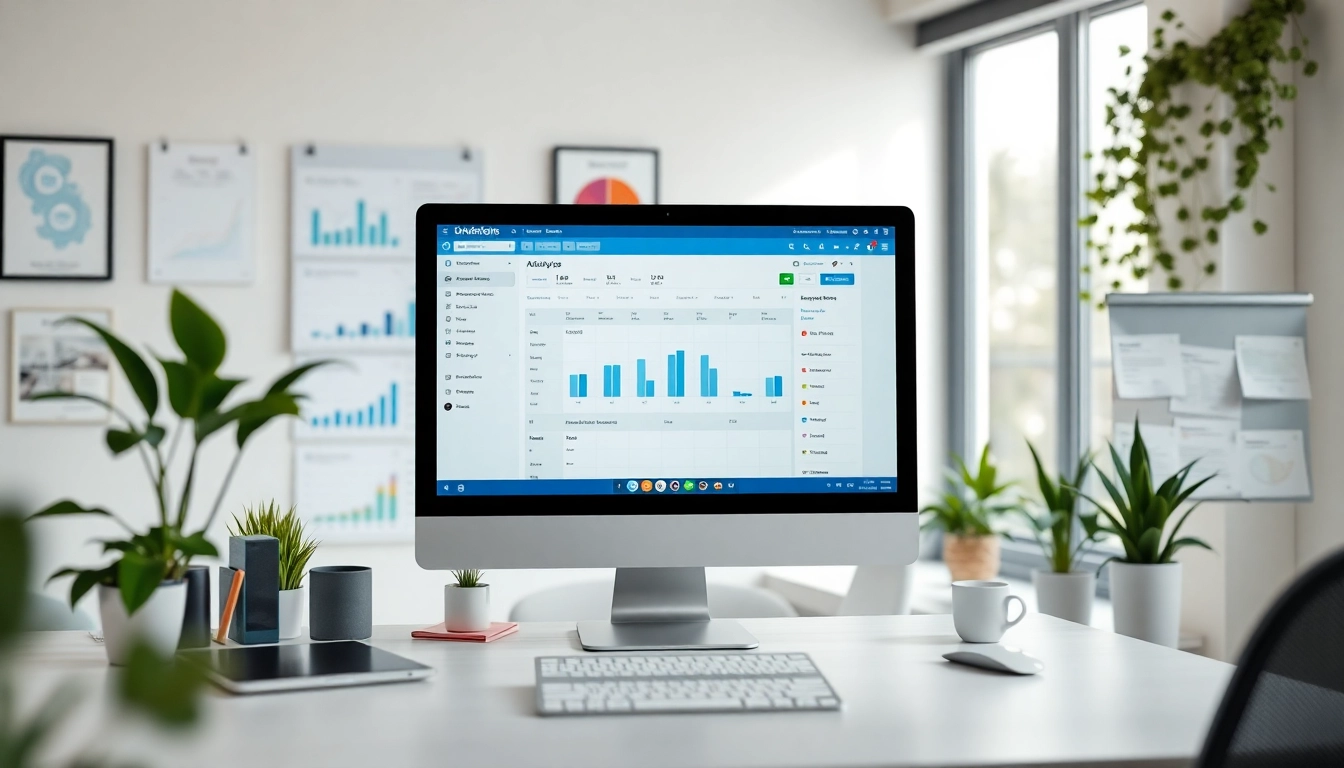Understanding Competitive Intelligence Services
In today’s hyper-competitive business landscape, organizations must be equipped with precise knowledge that allows them to outpace their rivals. This is where competitive intelligence services come into play. These services not only help businesses monitor their competitive landscape but also facilitate informed decision-making by gathering valuable insights about competitors, market trends, and consumer behavior.
What is Competitive Intelligence?
Competitive intelligence (CI) refers to the systematic process of gathering, analyzing, and applying information about competitors and the industry to inform strategic business decisions. CI encompasses an array of activities, from examining competitor products and services to analyzing market entry barriers and identifying emerging trends. By employing ethical and legal intelligence gathering methodologies, businesses can create strategies that promote sustainable competitive advantages.
The Importance of Competitive Intelligence in Business
The importance of competitive intelligence lies in its ability to provide comprehensive insights that inform business strategy. Properly executed CI can:
- Enhance Strategic Planning: By understanding competitors’ strengths and weaknesses, companies can better position their offerings and fine-tune their marketing strategies.
- Identify Market Opportunities: CI helps uncover potential market gaps, allowing organizations to develop new products or services that meet unfulfilled needs.
- Mitigate Risks: Continuous monitoring of competitor activities enables companies to anticipate industry shifts and adapt proactively, thereby reducing vulnerability to unforeseen disruptions.
- Improve Customer Understanding: Insights derived from CI can reveal customer preferences and behaviors, enabling businesses to create more targeted and effective marketing initiatives.
Common Tools Used in Competitive Intelligence
The tools employed in competitive intelligence are diverse and can range from analytic software to market research firms. Some of the most common tools include:
- Online Marketplaces: Platforms like SimilarWeb and SEMrush provide vital metrics on website traffic and competitor marketing strategies.
- Social Media Monitoring Tools: Tools like Hootsuite and Brandwatch track competitor social media activity, allowing insights into engagement levels and audience interaction.
- Survey and Feedback Tools: Services like SurveyMonkey help gather consumer feedback and opinions on competing products.
- Data Analytics Platforms: Services such as Tableau and Google Analytics deliver deep insights into market and trends analysis.
Key Components of Effective Competitive Intelligence
Gathering Data: Primary vs. Secondary Research
Effective competitive intelligence hinges on the quality of data gathered. This data can be classified into two primary types: primary and secondary research.
Primary Research involves collecting firsthand data directly from sources. This can include surveys, interviews, focus groups, and direct observations. While it is time-consuming and may require considerable resources, primary research yields rich, specific insights tailored to an organization’s needs.
Secondary Research, on the other hand, encompasses the analysis of existing data already collected by others, such as industry reports, academic papers, and media articles. Though less costly than primary research, secondary research may lack specificity or current relevance and should be complemented by primary findings for a well-rounded perspective.
Analyzing Market Trends and Competitor Strategies
Data analysis is crucial in the CI process. By employing various analytical techniques—such as SWOT analysis, PEST analysis, or Porter’s Five Forces—businesses can dissect their competitive environment effectively. These tools enable companies to:
- Assess their internal strengths and weaknesses against competitor strengths and weaknesses.
- Understand external factors impacting their industry and decision-making.
- Identify competitive dynamics and potential market disruptors.
Through rigorous analysis, companies can derive actionable insights that fuel innovative strategic initiatives.
Utilizing Industry Reports for Better Insights
Industry reports serve as a robust resource for competitive intelligence. They provide comprehensive overviews of market dynamics, growth trends, and emerging opportunities within specific sectors. Reports from organizations like Gartner, Forrester, or IBISWorld can be instrumental in defining market benchmarks and setting strategic goals. Companies should regularly consult these reports to stay informed and ahead of competitors.
Implementing Competitive Intelligence Services
Steps to Integrate CI into Your Business Strategy
Integrating competitive intelligence into business strategy involves several key steps:
- Define Objectives: Establish what you aim to achieve through competitive intelligence efforts, such as increasing market share or launching a new product.
- Identify Sources: Determine the sources of data that will be most valuable—whether through primary research, secondary research, or a combination of both.
- Establish Processes and Tools: Deploy the right tools and methodologies to facilitate data collection and analysis. Ensure teams have access to necessary software and are trained on its use.
- Gather and Analyze Data: Implement the processes established to gather and analyze intelligence continuously.
- Translate Intelligence into Action: Use insights obtained from CI to inform strategic decisions, ensuring they align closely with overarching business goals.
- Monitor and Adjust: Continuously monitor industry and competitive developments and adjust strategies accordingly to remain competitive.
Best Practices for Effective Decision-Making
Embedding CI into corporate culture requires commitment and continuity. Best practices include:
- Encourage Collaboration: Promote communication between departments, allowing marketing, sales, and product development teams to share insights drawn from CI.
- Focus on Ethical Practices: Ensure that all intelligence-gathering efforts are conducted ethically and within legal boundaries to avoid potential pitfalls.
- Emphasize Continuous Learning: Foster a culture that values ongoing education and the adaptation of new CI technologies and methodologies.
Measuring the Impact of CI on Business Outcomes
To understand the ROI of competitive intelligence efforts, organizations must measure their impact on business outcomes. Key performance indicators can include:
- Market Share Growth: Analyze changes in market share relative to competitive intelligence initiatives.
- Revenue Increases: Measure profitability and revenue growth linked to new product solutions informed by CI data.
- Efficiency Improvements: Evaluate the speed and precision of decision-making processes following CI integration.
Case Studies: Successful Use of Competitive Intelligence
How Companies Transformed Their Strategies with CI
One notable example of successful CI application comes from Netflix, which utilized competitive intelligence to analyze viewer preferences and content consumption. By gathering data on who watched what, Netflix was able to pivot from a traditional DVD rental model to a streaming service that revolutionized content consumption. The data informed not only the type of content to produce but also the entire user experience, leading to significant growth and customer loyalty.
Industry-Specific CI Examples
In the pharmaceutical sector, companies utilize competitive intelligence to monitor drug approval processes and competitive launches. For instance, Pfizer’s strategic CI efforts during the development of its vaccines allowed them to identify emerging competition in the market early and adjust their marketing strategies accordingly. This vigilance ensured Pfizer’s vaccines remained at the forefront of public health discussions during the pandemic.
Lessons Learned from CI Failures
Firms like Blockbuster serve as cautionary tales regarding inadequate competitive intelligence efforts. Blockbuster’s downfall was largely due to a failure to understand the digital shift in media and consumer behavior—especially the rise of on-demand streaming services like Netflix. Their neglect in adapting to these changes led to their market exit. This case underscores the criticality of proactive CI and the need for companies to evolve with consumer preferences and technological advancements.
The Future of Competitive Intelligence Services
Emerging Trends in CI Technologies
As technology evolves, so too does the field of competitive intelligence. Some of the current trends include:
- Big Data Analytics: Firms are leveraging big data to spot trends across vast data sets and predict market behaviors.
- Real-Time Intelligence: The demand for instantaneous insights is growing, with tools that provide up-to-the-minute updates on competitors and market shifts becoming increasingly popular.
- Enhanced Visualization Tools: With advanced software, companies can visualize complex data easily, making it accessible even for non-technical teams.
The Role of AI and Automation in Competitive Analysis
Artificial intelligence (AI) and automation are transforming competitive analysis. AI algorithms can quickly analyze countless data points to generate insights previously unattainable. As these technologies proliferate, businesses will gain the ability to predict competitor moves, assess market trends more accurately, and enhance decision-making speed. Automation also streamlines the data collection process, ensuring that teams spend less time gathering information and more time making strategic decisions.
Preparing for Future Market Challenges with CI
In an era marked by rapid technological change and unpredictability, businesses must prepare for numerous potential market challenges. Competitive intelligence can aid by:
- Enabling adaptability and flexibility in strategies that respond to market dynamics.
- Anticipating disruptions caused by emerging technologies or economic shifts.
- Facilitating innovation by continuously identifying new opportunities to capture market share.
With a robust competitive intelligence strategy, organizations can maintain a lens on the future, making informed choices that bolster their resilience and competitive edge in the marketplace.














Leave a Reply